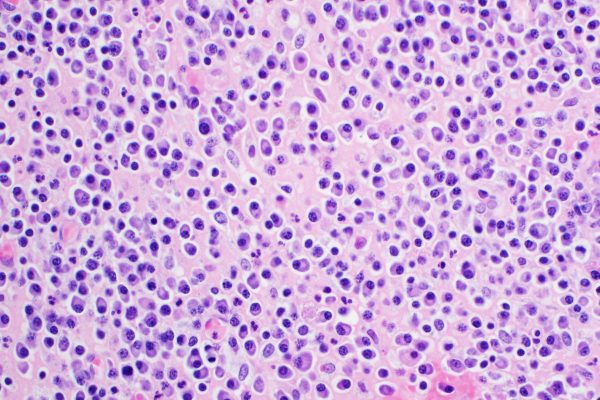
The combination of daratumumab with bortezomib, lenalidomide, and dexamethasone (VRd) is anticipated to further improve response rates and long-term outcomes in newly diagnosed patients with multiple myeloma (MM). Given this potential, and based on the initial safety and efficacy results observed in the phase II study MMY2004, this phase III study was designed to demonstrate improved outcomes for patients treated with daratumumab+VRd.1
Daratumumab, a monoclonal antibody targeting CD38, is approved to treat multiple myeloma (MM) in combination with various standard regimens. The combination of daratumumab with bortezomib, lenalidomide, and dexamethasone (VRd) is anticipated to further improve response and long-term outcomes in newly diagnosed patients with MM. Given this potential, and based on the initial safety and efficacy results observed in the phase II study MMY2004, as well as the positive results with daratumumab in various disease settings and combination regimens, this phase III study was designed to demonstrate improved outcomes for patients treated with daratumumab+VRd. Additionally, this study used the subcutaneous (SC) formulation of daratumumab instead of the IV formulation utilised in the MMY2004 study, which may limit additional toxicity.2
Methods
Seven hundred and nine transplantation-eligible patients with newly diagnosed MM were randomly assigned to receive VRd induction and consolidation therapy and lenalidomide maintenance therapy, with (D-VRd group) or without SC daratumumab (VRd group). The primary endpoint was progression-free survival (PFS). Key secondary endpoints were complete response (CR) or better, and minimal residual disease (MRD)-negative status.
Findings
After a median follow-up of 47.5 months, the risk of disease progression or death in the D-VRd group was lower than in the VRd group. The estimated percentage of patients with PFS at 48 months was 84.3% in the D-VRd group and 67.7% in the VRd group (hazard ratio for disease progression or death, 0.42; 95% confidence interval, 0.30 to 0.59; P<0.001); the P value crossed the pre-specified stopping boundary (P=0.0126). The percentage of patients with a CR or better was higher in the D-VRd group (87.9% vs. 70.1% in the VRd group, P<0.001), as was the percentage of patients with MRD-negative status (75.2% vs. 47.5%, P<0.001). Death occurred in 34 patients in the D-VRd group and 44 patients in the VRd group. Grade 3 or 4 adverse events (AEs) occurred in most patients in both groups. The most common AEs were neutropenia (62.1% vs. 51.0% with D-VRd and VRd, respectively) and thrombocytopenia (29.1% vs. 17.3%, respectively). Serious AEs occurred in 57.0% of the patients in the D-VRd group and 49.3% of those in the VRd group.
Conclusions
The addition of subcutaneous daratumumab to VRd induction and consolidation and to lenalidomide maintenance therapy resulted in a significant PFS benefit among transplantation-eligible patients with newly diagnosed multiple myeloma.2
REFERENCES